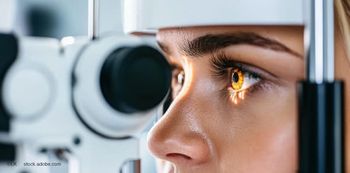
How to avoid mistaken patient identity during keratorefractive surgery
Mistaken patient identity during keratorefractive surgery is devastating for the patient and surgeon. A "foolproof" method for avoiding mistaken identity involves obtaining the patient's autorefraction moments before surgery and taping the autorefractor strip to the patient. The patient's individual autorefraction, cylinder axis, and other data stay with the patient at all times, enabling the surgeon to make sure the information on the laser computer matches the information on the strip.
Key Points
Many refractive surgeons have had the unpleasant experience of performing keratorefractive surgery on the wrong patient. Not only is it medically disastrous when the wrong prescription is treated, it is legally devastating for the surgeon. But do those mistakes still happen in the new era of wavefront technology, with patient-specific treatments and iris recognition?
Errors can occur. For example, astigmatism axis measurements can be flipped 90° so that +3.00 × 15 suddenly becomes +6.00 × 15. The wrong patient can be treated; someone with +3.00 D hyperopia can be treated for –3.00 D, resulting in hyperopia of +6.00 D.1 Given those and other potential mistakes, is there a foolproof system to avoid mistaken patient identity during refractive surgery?
Common systems surgeons use to prevent mistaken identity and, therefore, incorrect treatments, are outlined in Figure 1. The figure shows that even if steps 1 through 4 are followed faithfully, surgery still could be performed on the incorrect patient.
Autorefraction method
On the way to the surgery suite, the technician stops with the patient at the autorefractor, which prints out a strip. The technician tapes the strip to the patient's shoulder, and the patient sits in the waiting area or operating room. Autorefraction should be performed moments before surgery; the patient can't leave and come back later or take off the strip and go to the waiting room.
The surgeon can double-check the autorefraction, cylinder axis, and data on the laser computer to ensure that the information coincides with the strip. Checking the patient's name, date of birth, etc. is not necessary. The most important thing is operating the correct refraction on the correct patient.
Using this system, even if the patient's data were entered under the wrong name, or if two patients have the same name or date of birth, or the patient answers to the wrong name, the surgeon is always treating the correct eye and the correct refraction. Using the head autorefraction technique is the next-best thing to intraoperative autorefraction.
Lisa Martén, MD, MPH, recently completed her fellowship with Wang Vision Institute, Nashville, TN, and is practicing in San Antonio, TX.
Tracy Swartz, OD, MS is director of clinical operations, Wang Vision Institute, Nashville, TN, and adjunct faculty, Indiana University School of Optometry, Bloomington, IN. She acknowledged no financial interest in the products or companies mentioned herein.
Ming Wang, MD, PhD, is medical director of refractive surgery, Aier Eye Hospital System, Shanghai, China; clinical associate professor of ophthalmology, University of Tennessee, Memphis; attending surgeon, Saint Thomas Hospital, Nashville, TN; and director, Wang Vision Institute, Nashville. He acknowledged no financial interest in the products or companies mentioned herein.
Reference
1. Rodríguez-Zarzuelo G, Galarreta-Mira D, Merayo-Lloves JM, et al. [Refractive surprise after LASIK]. Arch Soc Esp Oftalmol. 2005;80:547-549.
Newsletter
Don’t miss out—get Ophthalmology Times updates on the latest clinical advancements and expert interviews, straight to your inbox.













































.png)


